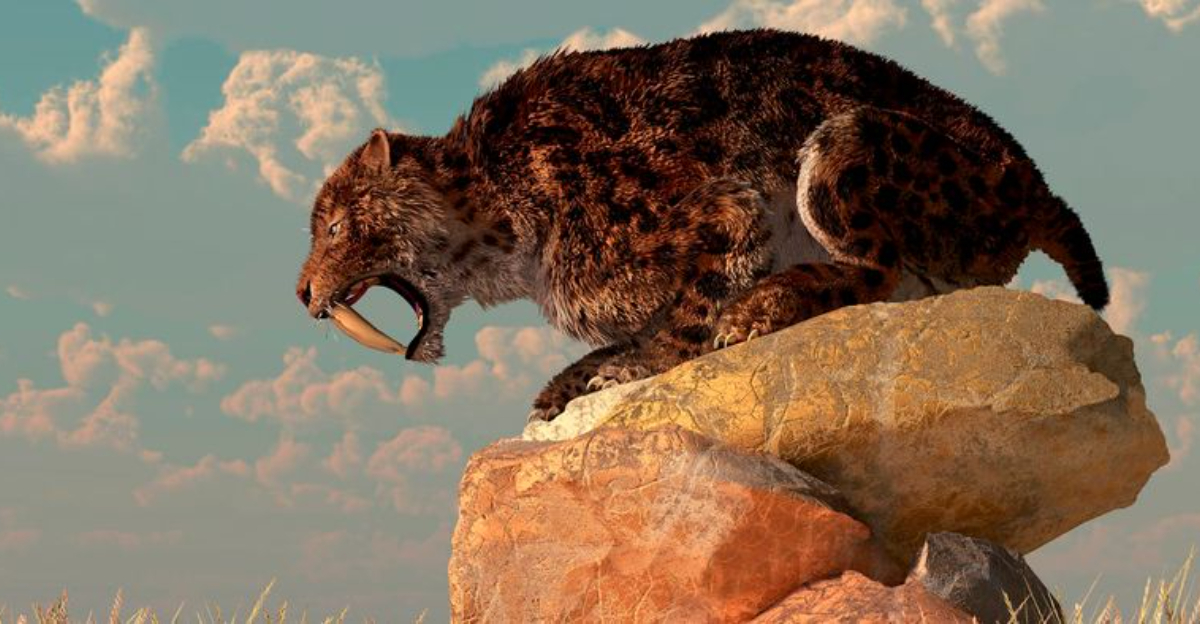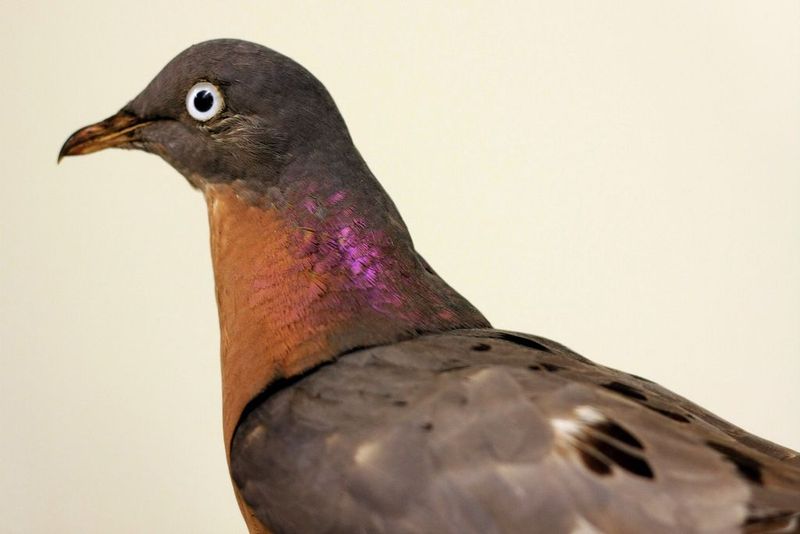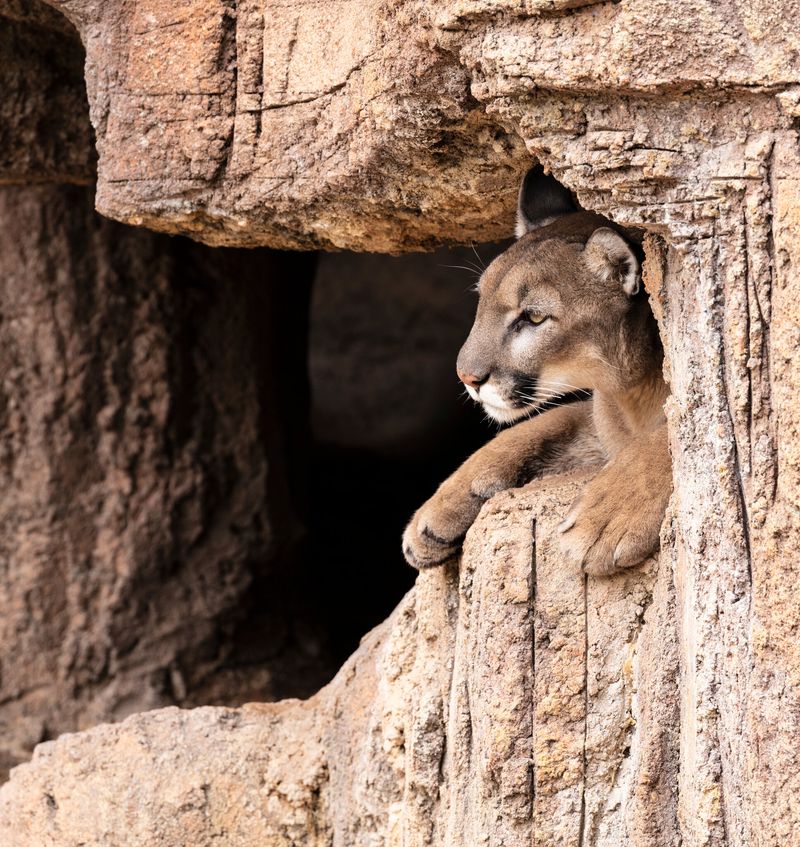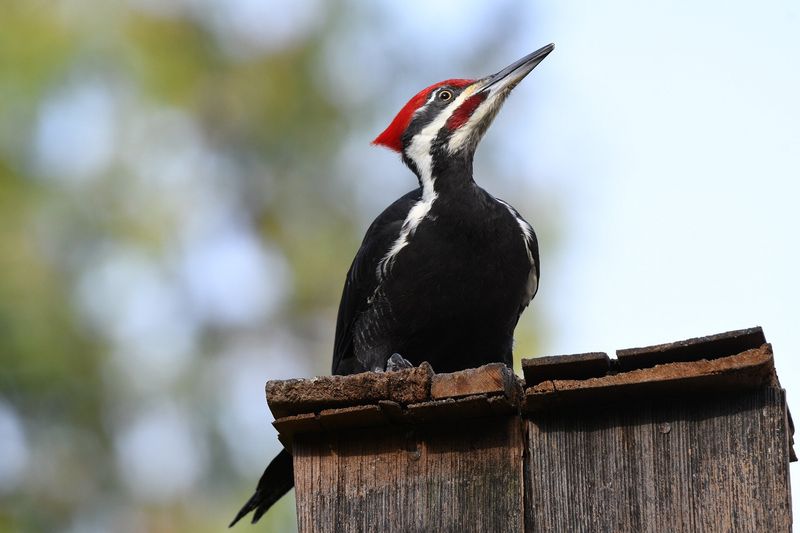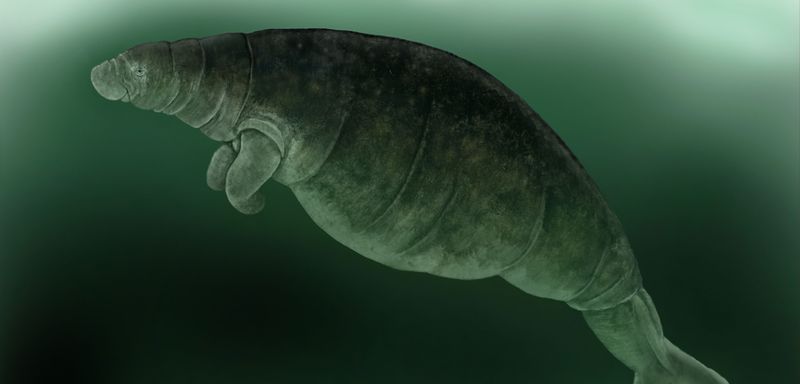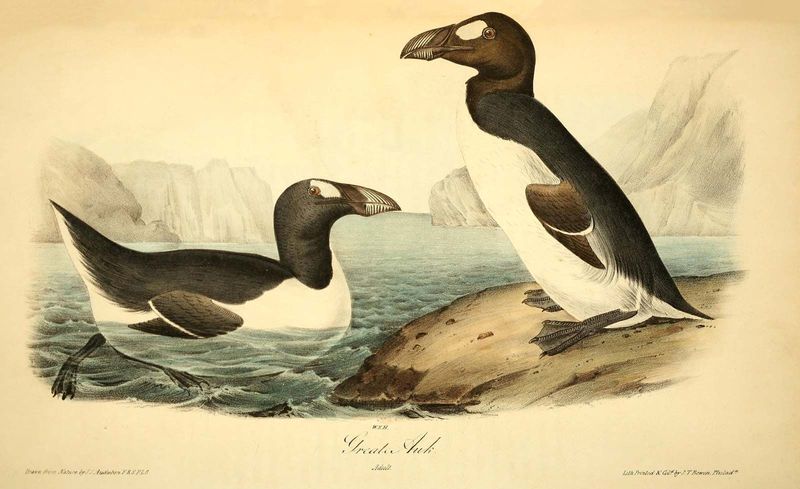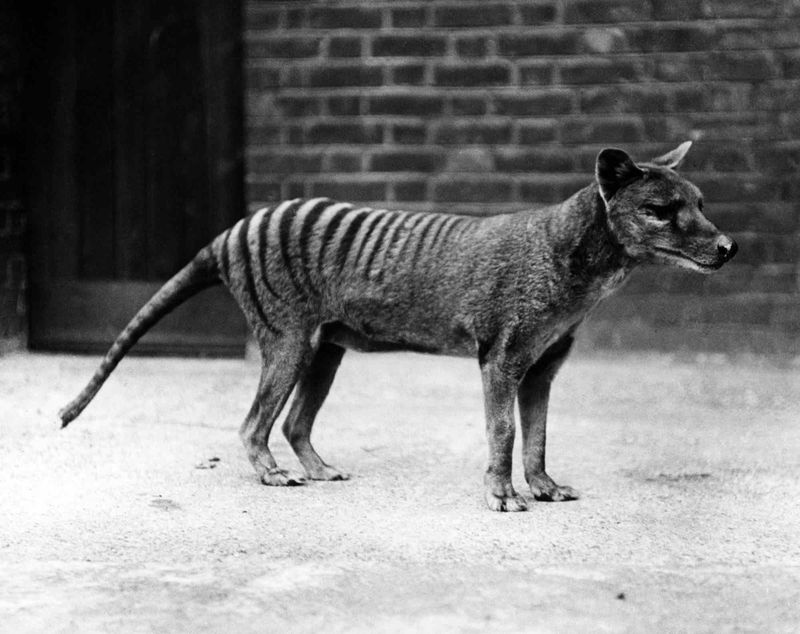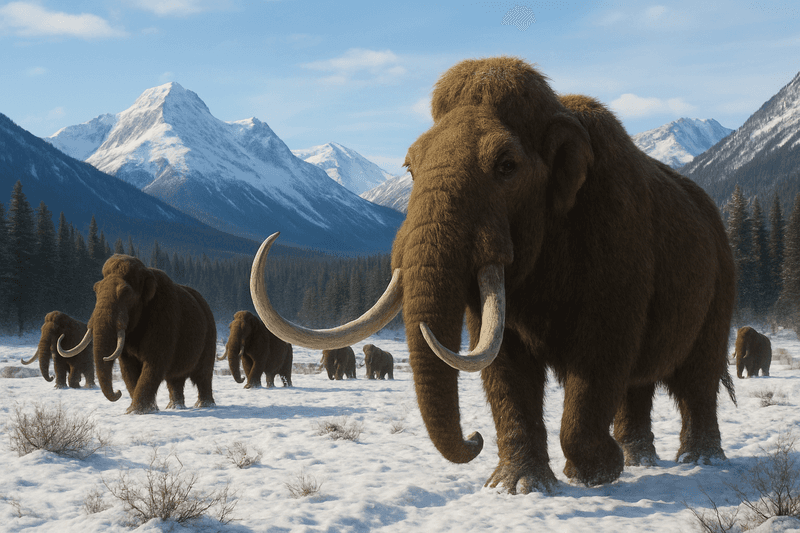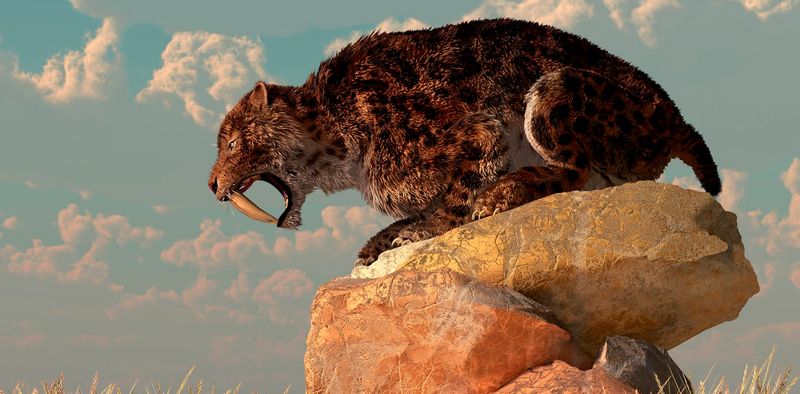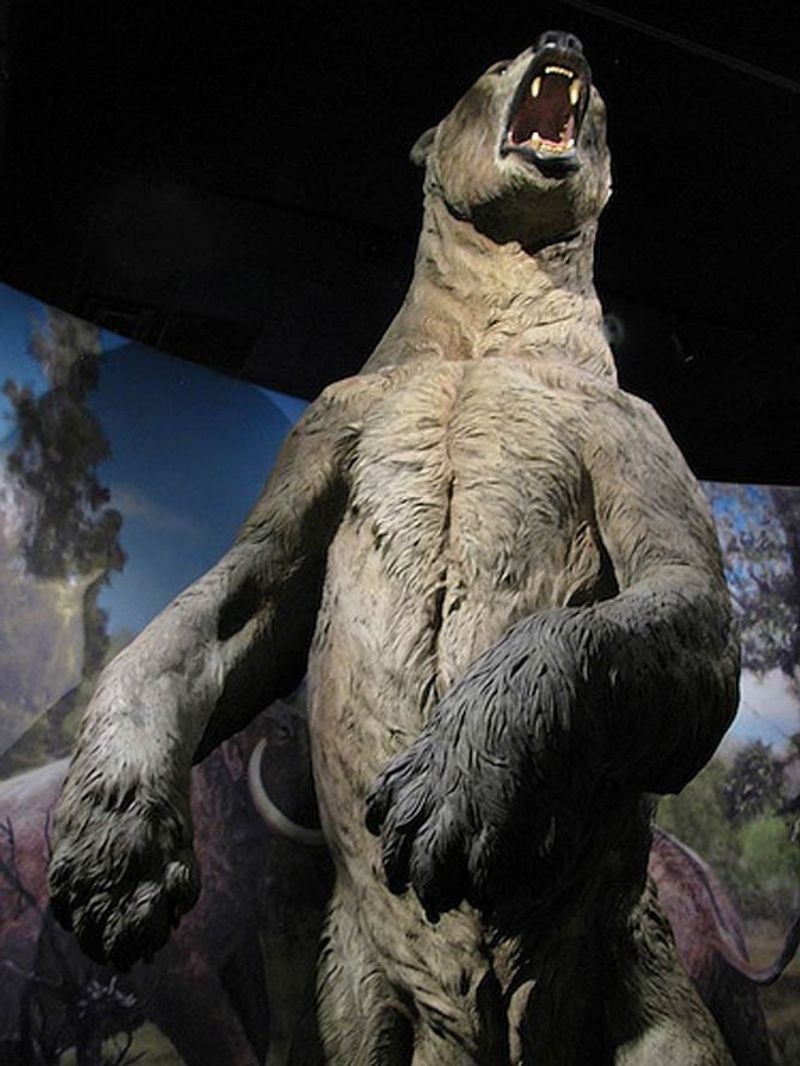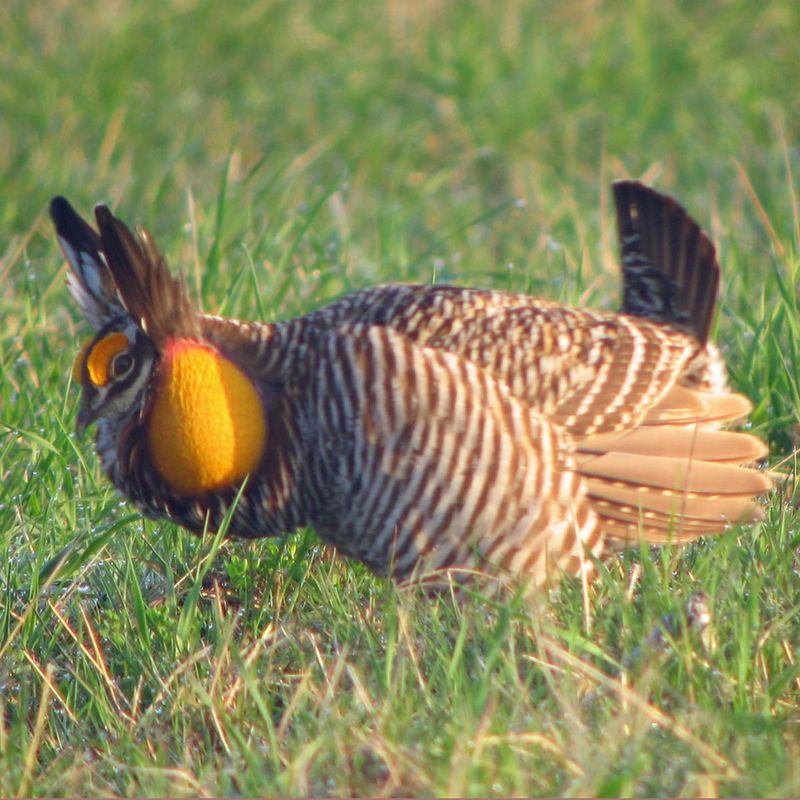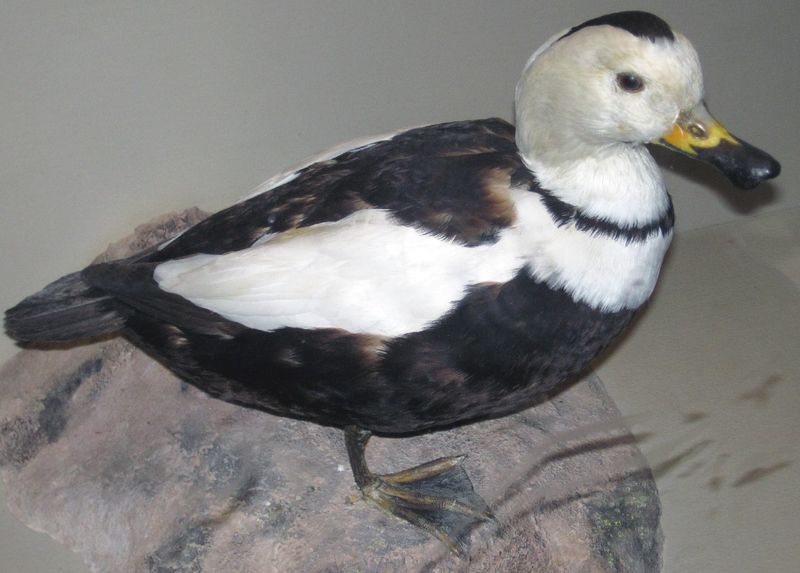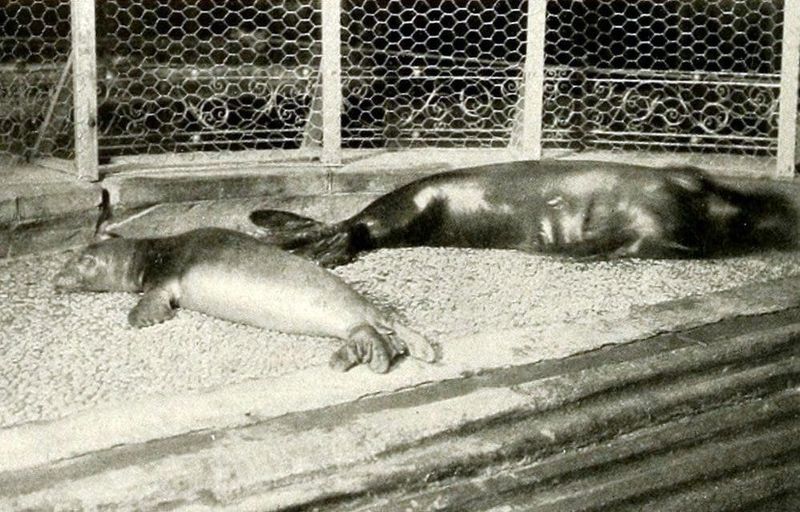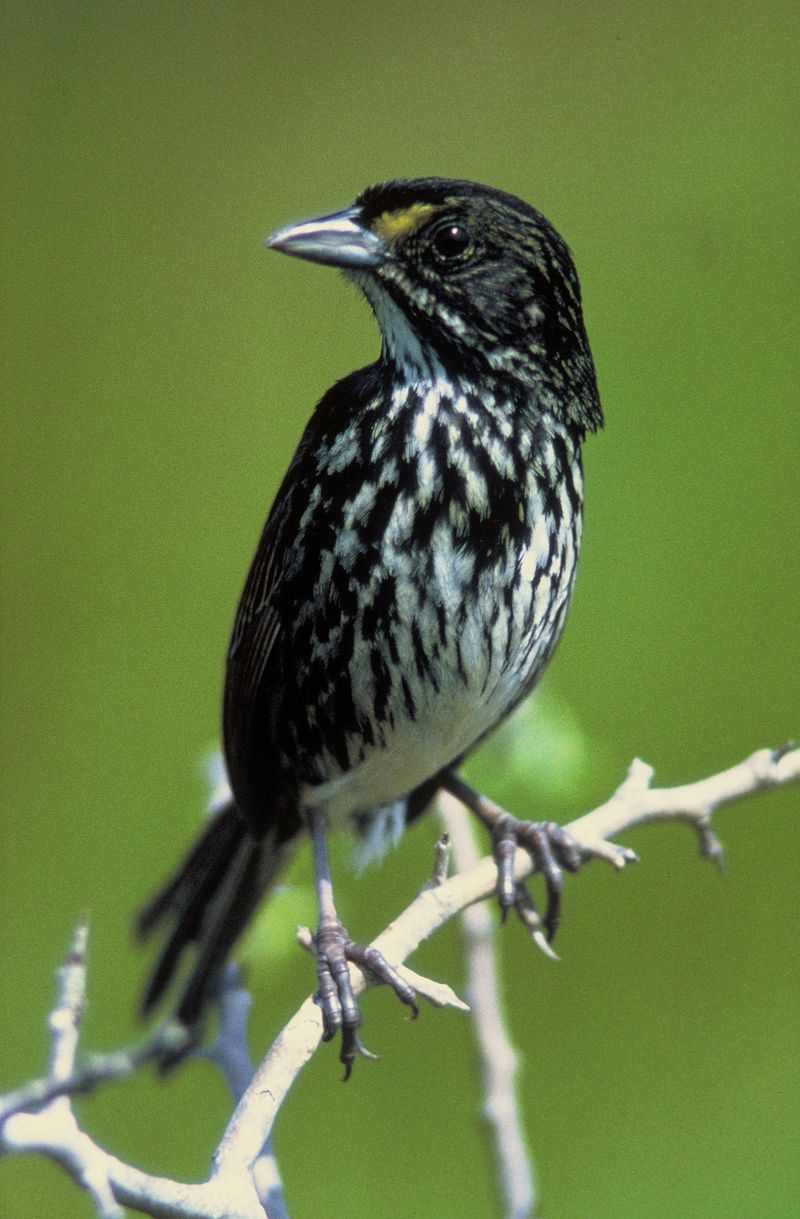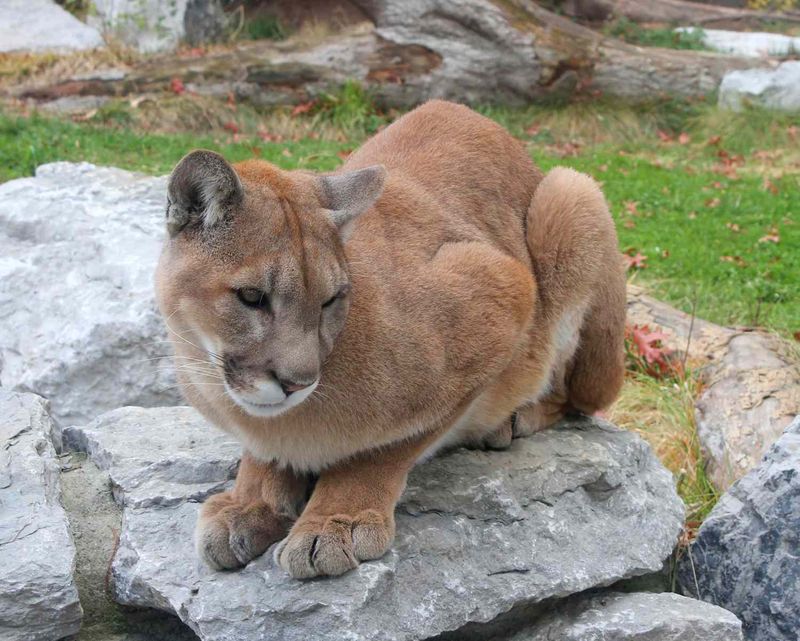📖 Table of Content:
- 1. Passenger Pigeon
- 2. Eastern Cougar
- 3. Carolina Parakeet
- 4. Ivory-Billed Woodpecker
- 5. Steller’s Sea Cow
- 6. Great Auk
- 7. Tasmanian Tiger in America
- 8. Woolly Mammoth
- 9. Sabertooth Cat
- 10. Short-Faced Bear
- 11. Heath Hen
- 12. Labrador Duck
- 13. Caribbean Monk Seal
- 14. Giant Ground Sloth
- 15. Dusky Seaside Sparrow
- 16. American Cheetah
The American wilderness holds many secrets, and some people believe it might still harbor animals long declared extinct. From the mountains of the Pacific Northwest to the swamps of the South, reports of mysterious creature sightings continue to emerge year after year. While scientists maintain these animals no longer exist, a dedicated community of believers, eyewitnesses, and cryptozoology enthusiasts insist otherwise.
1. Passenger Pigeon
Once darkening American skies by the billions, passenger pigeons officially went extinct when the last one, Martha, died in 1914 at the Cincinnati Zoo. Despite this confirmed extinction, dozens of sightings are reported annually across the Midwest and Eastern forests.
Bird watchers occasionally claim to spot small flocks with the distinctive long tails and reddish breasts characteristic of these lost birds. Wildlife officials attribute most sightings to misidentified mourning doves or band-tailed pigeons, yet the reports persist.
Some believers theorize that a remnant population might have survived in remote wooded areas, having learned to avoid humans after the devastating hunting that wiped out their kind.
2. Eastern Cougar
The U.S. Fish and Wildlife Service declared the eastern cougar extinct in 2018, yet hundreds of sightings are reported each year across Appalachia. Locals swear they’ve seen tawny mountain lions crossing roads or lurking at forest edges in states where they supposedly haven’t existed for decades.
Wildlife cameras occasionally capture blurry images of large cat-like creatures, fueling speculation. Conservation officers typically attribute these sightings to western cougars expanding their territory, bobcats, or even large domestic cats seen from misleading distances.
The persistence of eastern cougar reports has created tension between wildlife authorities and rural communities who insist these stealthy predators never completely disappeared.
3. Carolina Parakeet
Bright green with a yellow head and orange face, the Carolina parakeet was America’s only native parrot until its extinction in 1918. Surprisingly, small green parrots resembling this extinct species still get reported in remote southern swamps and forests.
Birdwatchers occasionally claim to spot small flocks with the distinctive coloration flying between cypress trees or feeding on fruit. Ornithologists attribute these sightings to escaped pet parrots, particularly monk parakeets that have established feral populations across the South.
The Carolina parakeet’s extinction came from habitat loss, hunting for their colorful feathers, and farmers killing them as crop pests. Some enthusiasts maintain that isolated pockets of these birds might have survived in the most inaccessible swamplands.
4. Ivory-Billed Woodpecker
Nicknamed the “Lord God Bird” for its striking size and appearance, the ivory-billed woodpecker was officially declared extinct in 2021 after years of fruitless searches. Still, alleged sightings persist in the dense, swampy forests of Arkansas, Louisiana, and Florida.
Birders claim to hear its distinctive double-knock drumming or catch glimpses of a crow-sized woodpecker with white bills and striking white wing patches. In 2005, a video claimed to show an ivory-bill in Arkansas sparked massive search efforts but yielded inconclusive results.
Most experts believe witnesses are actually seeing a similar but smaller pileated woodpecker, yet the allure of finding this magnificent bird keeps hope alive among dedicated searchers who comb remote swamps.
5. Steller’s Sea Cow
Massive marine mammals reaching lengths of 30 feet, Steller’s sea cows were hunted to extinction by 1768. Remarkably, reports of enormous manatee-like creatures still emerge from Alaska’s Aleutian Islands and remote Pacific Northwest coastlines.
Fishermen and boaters occasionally report seeing unusually large, slow-moving animals that don’t match known species profiles. Marine biologists suggest these sightings likely involve northern elephant seals, groups of sea lions, or even misidentified gray whales viewed from particular angles.
The cold, foggy waters around the Aleutian chain provide perfect conditions for visual misidentifications. However, some cryptozoologists argue that the vast, unexplored ocean depths could potentially harbor a small population of these gentle giants that somehow escaped detection.
6. Great Auk
The penguin-like great auk, last confirmed in 1844, was a flightless seabird that once inhabited North Atlantic coastlines including Maine and Newfoundland. Occasionally, reports surface of penguin-like birds along the northeastern seaboard where no penguins should exist.
Boaters and coastal hikers sometimes claim to spot black-and-white birds standing upright on rocky outcroppings in areas far from any zoo. Wildlife officials typically attribute these sightings to razorbills, murres, or other auks – smaller relatives of the great auk that share some physical characteristics.
The great auk’s distinctive appearance – standing nearly 3 feet tall with a large white eye spot – makes it memorable but also easily confused with other seabirds, especially when viewed briefly or in poor visibility conditions.
7. Tasmanian Tiger in America
Though native to Australia, not America, reports of striped, dog-like creatures resembling the extinct thylacine have puzzled wildlife officials across the American West. These sightings typically describe wolf-like animals with distinctive tiger-like stripes and unusual hopping gaits.
Ranchers and hikers in remote areas of Montana, Idaho and Oregon occasionally report these strange canids. Scientists attribute these sightings to coyotes or wolves with mange (causing stripe-like patterns) or unusual color variations.
The theory goes that thylacines might have been privately imported to America before their extinction and subsequently escaped or were released. While biologists consider this virtually impossible, the reports persist, creating an unexpected American chapter in the thylacine’s extinction story.
8. Woolly Mammoth
Prehistoric giants thought extinct for thousands of years, woolly mammoths supposedly vanished from North America around 10,000 years ago. Yet cryptid hunters point to occasional reports from Alaska and northern Canada describing enormous, hairy elephant-like creatures in remote wilderness areas.
Indigenous communities in these regions sometimes share traditional knowledge suggesting these ice age behemoths might have survived longer than science indicates. Most biologists attribute these sightings to misidentified moose or bears, particularly when seen in poor visibility conditions.
The discovery of remarkably preserved mammoth remains in permafrost has fueled speculation that small populations might have survived in isolated pockets much longer than commonly believed. Climate change and melting permafrost have renewed interest in these claims.
9. Sabertooth Cat
Extinct for approximately 10,000 years, sabertooth cats occasionally appear in reports from the American Southwest and parts of Appalachia. Witnesses describe unusually large felines with distinctive protruding teeth that don’t match any known living species.
Ranchers and hunters in remote areas sometimes claim to have seen these prehistoric-looking cats stalking wildlife or crossing roads at dusk. Wildlife biologists typically attribute these sightings to mountain lions with unusual dental conditions or injuries that might create the appearance of protruding canines.
The mystique of these prehistoric predators continues to capture the public imagination. Anthropologists note that sabertooth cats feature prominently in the oral traditions of several Native American tribes, suggesting either cultural memory spanning millennia or the incorporation of fossil discoveries into traditional stories.
10. Short-Faced Bear
North America’s prehistoric short-faced bears stood over 11 feet tall and were the continent’s apex predators until their extinction around 11,000 years ago. Today, reports occasionally surface describing bears of impossible size and proportions in Alaska, northern Canada, and the Pacific Northwest.
Hunters and backpackers sometimes describe encountering bears significantly larger than known grizzlies, with unusually long legs and different facial proportions. Wildlife officials attribute these sightings to particularly large brown bears viewed in circumstances that distorted their apparent size.
The short-faced bear’s distinctive proportions – longer legs, shorter snout, and more upright posture than modern bears – make it recognizable even to those unfamiliar with paleontology. This has led some cryptozoologists to speculate about relict populations surviving in extremely remote wilderness areas.
11. Heath Hen
Once abundant across eastern coastal plains, the heath hen’s last confirmed individual died on Martha’s Vineyard in 1932. Despite this well-documented extinction, reports of birds matching their distinctive appearance occasionally emerge from rural areas of Massachusetts, New York, and New Jersey.
Birdwatchers sometimes claim to spot prairie chicken-like birds in areas where they shouldn’t exist. Ornithologists typically attribute these sightings to ruffed grouse, introduced pheasants, or occasionally to actual prairie chickens that have wandered far from their normal range.
The heath hen’s story is particularly poignant because conservation efforts began too late. The subspecies was reduced to a single population on Martha’s Vineyard that succumbed to disease, predation, and habitat loss despite protection attempts – making claimed sightings especially noteworthy to conservation historians.
12. Labrador Duck
The Labrador duck holds the unfortunate distinction of being the first recorded North American bird extinction, vanishing around 1878. Despite this early disappearance, sporadic reports describe unusual black and white ducks matching their distinctive appearance along Atlantic coastlines.
Waterfowl hunters and coastal birdwatchers occasionally report seeing ducks with the Labrador’s distinctive white and black pattern and unusually shaped bill. Ornithologists attribute these sightings to common goldeneyes, buffleheads, or other diving ducks with similar coloration patterns.
The Labrador duck’s extinction remains somewhat mysterious, as it disappeared before scientific study could properly document its lifestyle and habits. This knowledge gap has fueled speculation that small populations might have survived undetected in remote coastal areas, though most experts consider this extremely unlikely.
13. Caribbean Monk Seal
The last confirmed Caribbean monk seal sighting occurred in 1952, leading to its official extinction declaration in 2008. Despite this, reports of seal-like creatures occasionally emerge from the Florida Keys, Gulf Coast, and Caribbean islands where no seals should exist.
Fishermen and boaters sometimes describe encountering seal-like animals in warm southern waters far outside the range of known seal species. Marine biologists typically attribute these sightings to visiting harbor seals that have strayed from northern waters, manatees viewed from particular angles, or even large sea turtles seen briefly.
The Caribbean monk seal’s extinction resulted primarily from hunting for oil and overharvesting by European colonizers. Some cryptozoologists suggest small populations might have adapted to avoid human contact, retreating to isolated keys and cays throughout the region’s complex archipelagos.
14. Giant Ground Sloth
Enormous ground sloths weighing up to 4 tons roamed North America until approximately 10,000 years ago. Remarkably, reports of massive, slow-moving, shaggy creatures emerge occasionally from remote areas of the Amazon basin and even swampy regions of the southern United States.
Local legends in parts of Florida and Louisiana sometimes reference giant, shambling creatures moving through swamps at night. Biologists attribute these sightings to bears standing on hind legs, particularly when seen in poor lighting or foggy conditions.
The ground sloth’s distinctive features – massive claws, shaggy fur, and bipedal capability – make it an unmistakable creature if actually encountered. Some cryptozoologists point to the discovery of seemingly fresh ground sloth remains in South American caves as evidence these prehistoric creatures might have survived longer than officially recognized.
15. Dusky Seaside Sparrow
Declared extinct in 1990 after the last captive bird died in 1987, the dusky seaside sparrow was a victim of habitat destruction in Florida’s marshlands. Despite its well-documented disappearance, birders occasionally report seeing these distinctive dark sparrows in remaining Florida coastal marshes.
Bird enthusiasts sometimes claim to spot unusually dark seaside sparrows that don’t match the appearance of known surviving subspecies. Ornithologists attribute these sightings to normal variation in other seaside sparrow subspecies or to temporarily sooty individuals dirtied by marsh mud or pollutants.
The dusky seaside sparrow’s extinction represents a conservation tragedy, as it occurred despite awareness of the bird’s plight. Some birdwatchers maintain hope that overlooked populations might exist in unsurveyed marsh areas, though genetic studies of related sparrow populations have not supported this possibility.
16. American Cheetah
North America once hosted its own cheetah species that went extinct approximately 12,000 years ago. Today, wildlife officials occasionally receive reports of unusually fast-running, spotted cat-like animals from the American Southwest that don’t match known species profiles.
Ranchers and hikers in remote areas sometimes describe encountering medium-sized cats capable of incredible bursts of speed. Wildlife biologists typically attribute these sightings to mountain lions, particularly juvenile individuals, which can appear more slender, or to introduced exotic cats that have escaped captivity.
The American cheetah was likely similar but not identical to modern African cheetahs, potentially explaining why descriptions don’t precisely match any known big cat. Some cryptozoologists suggest small populations might have survived in isolated pockets of suitable habitat across the American Southwest and northern Mexico.
